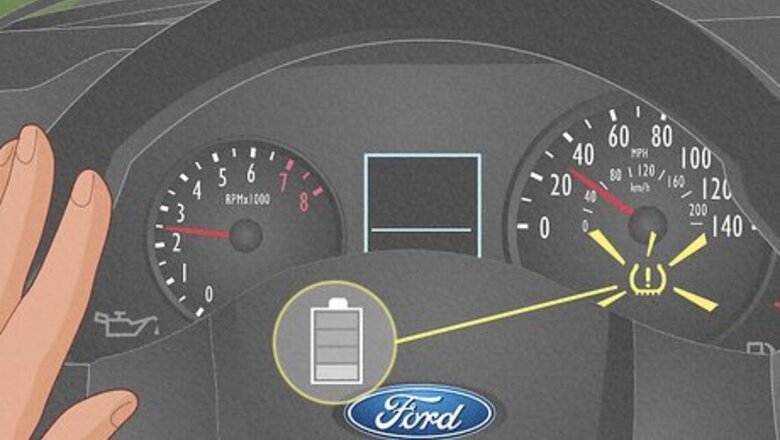
views
What does a flashing tire pressure light mean?
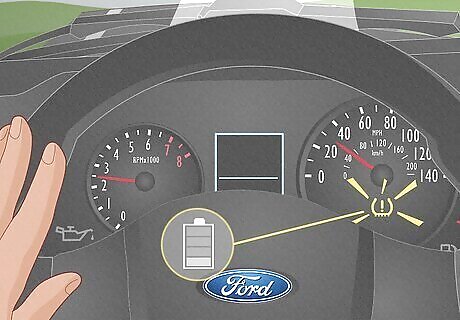
A flashing tire pressure (TPMS) light indicates a dying sensor battery. In Ford vehicles, the tire pressure sensor relies on its own battery. If your tire pressure monitoring system (TPMS) light is blinking, your vehicle is trying to let you know that the TPMS sensor battery is close to the end of its life and it needs to be replaced soon. How serious is a flashing TPMS light? A dying TPMS battery is no big deal. You can keep driving so long as you address the problem relatively soon. How do you replace the TPMS battery? Take your vehicle to any Ford dealership. They’ll have a much easier time replacing the sensor than a typical mechanic will. How much do TPMS batteries cost? A dealer should charge $50-85 per sensor battery. Each sensor has its own battery, so you’re best off replacing them all at once if you can afford it and don’t feel like going back to get each battery sensor replaced individually. What if the light flashes then goes solid? If the TPMS light flashes on startup then goes solid, the sensor and the battery are probably both bad. Expect to spend around $200 a tire in this case.
What does a solid tire pressure light mean?
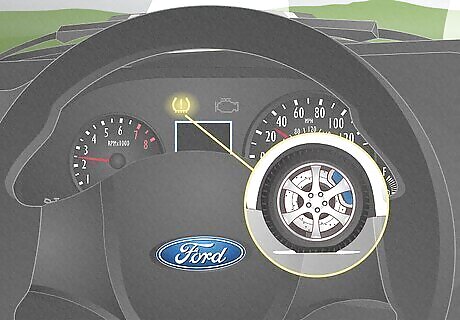
A solid tire pressure light indicates you have low tire pressure. Automotive specialist and mechanic Ed Beery explains how to check your tire pressure and fill any tires that are low: “Remove the valve stem cover for the first tire and keep it in your hand to avoid losing it. Push a pressure gauge into the valve and apply pressure evenly. If the tire is low, add air until the desired pressure is reached.” How much air do I add to my tire? Ed Beery points out, “The recommended tire pressure is printed on the side of the tire.” Typically, you need 28-36 PSI per tire. Why is the light still on? If the TPMS light stays illuminated after you’ve filled the low tires, you just need to reset the TPMS light.
Can I drive with low tire pressure?
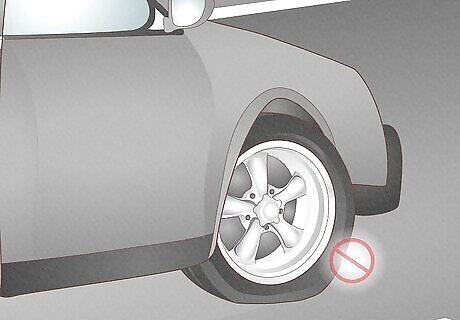
If the tire is visibly low, it’s not safe to drive. If your tire is basically flat and you can see the rubber sticking out where the tire sits on the ground, don’t drive. Throw your spare tire on the vehicle. If your tire is this flat, you’ve likely got a leak so drive to the mechanic or tire shop to have the tire patched and refilled. If you do drive on extremely low tire pressure, you risk permanently damaging your rim, axle, or chassis.
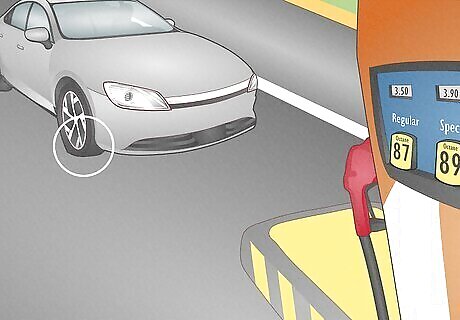
If the tire is only slightly low, you’re fine to drive to a gas station. If the TPMS light is on but the tire appears mostly inflated (i.e. it’s the same shape as the other tires), you’re good to drive for a short while. Take it slow and head over to the nearest gas station to fill the air in your tire. Don’t ignore low tire pressure. Even if a tire is slightly low, it’s a blowout risk. You’re also getting worse gas mileage on low pressure.
Resetting a Tire Pressure Light

Option #1—Drive for a while and restart the car. After you’ve fixed the underlying problem, the TPMS sensors may need some time to take some fresh readings and realize that there are no tire pressure issues. Hop on the highway when traffic is low and drive 50 miles per hour (80 km/h) for at least 10 minutes. The TPMS light should go away on its own.

Option #2—Turn the vehicle’s electrical on and use the TPMS reset button. If your Ford model has a dedicated TPMS reset button, just use that. Turn the key to the “on” position but don’t crank the ignition. Then, press and hold the TPMS light button until the light on the dashboard blinks three times. Release the button and start the vehicle. The light should go off. The TPMS button is more common in older Ford models (pre 2016 or so). It’s usually located near the steering wheel on the dashboard. Don’t forget to look underneath the steering wheel, too!

Option #3—Disconnect the battery and reconnect it. If you can’t get the light to reset manually, reset your vehicle’s entire system by taking the negative battery terminal off. With the vehicle off and cold, pop the hood and use a wrench to disconnect the negative terminal. Wait 15 minutes and reconnect the battery. The light should go away the next time you start the car. You can speed the waiting time up by leaning on the horn or leaving the interior lights on for a minute or so. This will discharge the battery faster. If the light still comes back on, see a mechanic. Either another sensor battery has died or there’s something wrong with your vehicle’s ICM or ECM. In any case, you can’t fix the problem without a mechanic.
Checking for Recalls
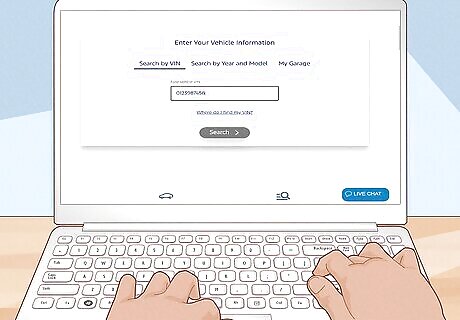
Enter your VIN on Ford’s support page to find any recalls. Ford’s tire pressure sensors are notorious for being the subject of recalls. Over the years, Ford has recalled a variety of different makes and models for TPMS sensor issues. Punch your vehicle’s VIN into Ford’s recall search engine to determine if your car needs service.



















Comments
0 comment